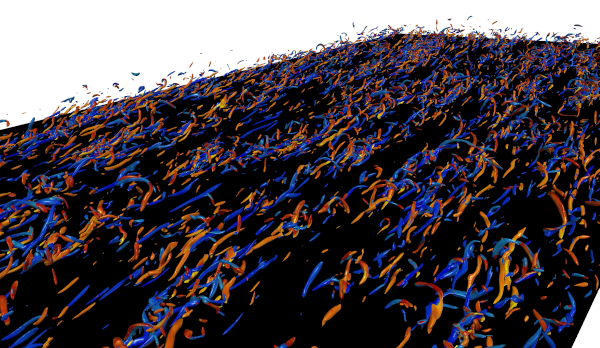Bioinspired Fluid Mechanics

We use simulations of fish-swimming to understand how undulatory propulsion and collective behaviour impact the range, endurance, stealth, and maneuverability of fish in their natural environment. Novel propulsion system designs that utilize such bioinspired characteristics could immensely benefit underwater geological and biological research, surveillance and rescue missions, and long-term environmental monitoring.
Turbulent Flows

Nearly a quarter the world's energy consumption is used for moving goods and people around the globe every day. Turbulent skin-friction constitutes a dominant portion of the drag experienced by transport systems, and it is controlled by relatively minute coherent structures that develop close to the wall. We use numerical simulations of turbulent flows to understand the evolution of these near-wall structures, with the aim of mitigating energy losses in external and internal wall-bounded flows.
Non-linear Dynamical Systems

Certain non-linear dynamical systems serve as simpler representations of complex phenomena in nature, such as heat transfer and fluid flow. These systems often exhibit chaotic behaviour, which is extremely difficult to predict and control. We use machine learning techniques to discover effective control mechanisms in such systems, which in turn helps us gain a better fundamental understanding of the underlying dynamics.
